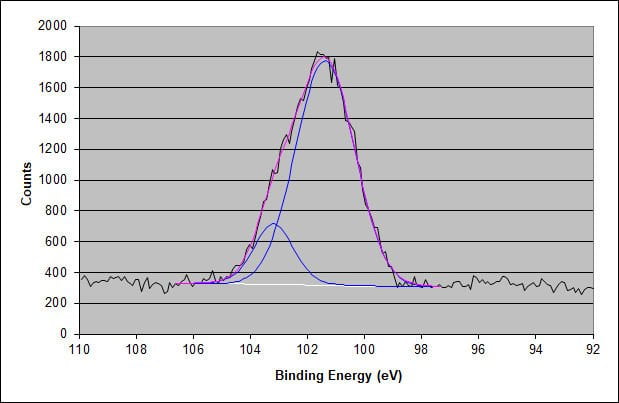

For elevated Ce( IV) doping levels the self-healing ability was observed preventing during long-term exposure further progression of the corrosion process. Higher relative intensity of the peak assigned to siloxane groups and higher silicon atom content in the surface layer (Fig. 9 The peak at 1 600 cm 1 is associated with the CO group. 25 Peak betw680 cm 1 corresponds to the Si CH x and C H peak. 7 The shoulder peak around 1 140 cm 1 corresponds to the Si O C group. It can be observed that there is a strong diraction peak at 2q 8. The XRD patterns of GO and AS-GO are shown in Fig. XPS imaging analysis has been applied in understanding the delamination problems of siloxane coatings on polymethyl-methacrylate (PMMA) polymer. The electrochemical assays showed that the coatings possess an excellent long-term stability at high corrosion resistance of up to 10 GΩ cm 2 and current densities about 6 orders of magnitude lower than that of the bare carbon steel. The peak at 1 071 cm 1 corresponds to the asymmetric stretching vibration of Si O Si bonding network. siloxane reacts with the hydroxyl groups on the surface of GO resulting in a decrease in COH content. The recent development of X-ray Photoelectron Spectroscopy (XPS) instrumentation with spatial resolution down to several microns has advanced the capability of elemental and chemical state imaging. High resolution XPS spectra of PDMS (a) and PVMS (b) samples treated with UVO for.

After identifying the optimum proportion of polymeric and silica phase for the formation of a highly ramified structure (MMA/TEOS = 4), increasing concentration of Ce( IV) ions (0.1% 87%) and enhances the polymerization of organic moieties. siloxane) (PDMS) is the most commonly utilized silicone, in which. All the successive sample manipulations were performed in a glove box under N 2 atmosphere. The films were prepared via the sol–gel route from radical polymerization of methyl methacrylate (MMA) with 3-methacryloxy propyltrimethoxysilane (MPTS) followed by acidic hydrolysis and condensation of tetraethoxysilane (TEOS). An XPS and AFM characterization of silica substrates engineered with a covalently assembled siloxane monolayer vacuum immediately before coupling layer deposition. This study reports on the characterization of cerium doped organic–inorganic hybrid coatings by correlating their structural properties with the corrosion protection efficiency of coated carbon steel.


 0 kommentar(er)
0 kommentar(er)
